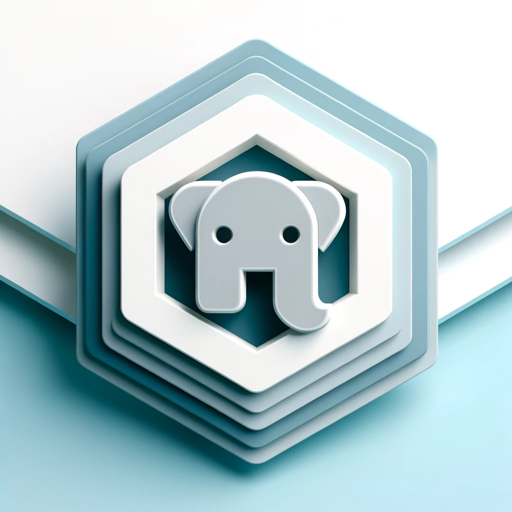CDK - AI-powered cloud infrastructure tool.

Build and deploy cloud infrastructure effortlessly.
Give me an overview of the main cdk commands
How to see the changes in my new config?
How to deploy with a new command?
What does bootstrap deploy?
Get Embed Code
Introduction to AWS CDK
The AWS Cloud Development Kit (CDK) is an open-source framework that allows developers to define cloud infrastructure using familiar programming languages like TypeScript, Python, Java, and C#. CDK abstracts AWS services into reusable and programmable components called *constructs*, which are integrated into application code. The primary design purpose of CDK is to simplify cloud infrastructure development by using high-level languages, reducing the complexity associated with writing raw CloudFormation templates. It enables infrastructure as code (IaC) while incorporating modern software engineering practices, such as version control, testing, and modular design. In contrast to directly writing CloudFormation JSON or YAML, CDK allows developers to interact with AWS services using more intuitive, object-oriented code constructs. This approach enhances productivity and allows seamless integration between infrastructure and application logic. **Example Scenario**: A development team building a web application on AWS can use the AWS CDK to define their infrastructure, such as creating a Lambda function, API Gateway, and DynamoDB table, all within the same TypeScript codebase. Instead of writing YAML or JSON CloudFormation scripts, they can define their infrastructure using constructs such as `lambda.Function`, `apigateway.RestApi`, and `dynamodb.Table`, reducing errors and making infrastructure deployment faster and more maintainable. Powered by ChatGPT-4o。

Main Functions of AWS CDK
Infrastructure as Code (IaC)
Example
Defining an S3 bucket, Lambda function, and API Gateway using Python code in CDK.
Scenario
In a serverless application, instead of manually configuring an S3 bucket for file uploads, a developer can define the bucket, set up permissions, and connect it to a Lambda function using the CDK. For example, `s3.Bucket(self, 'MyBucket')` creates an S3 bucket, and `lambda.Function(self, 'MyFunction')` defines a Lambda function that processes uploads.
Reusability with Constructs
Example
Creating a custom reusable construct for VPC, RDS, and Autoscaling Group components.
Scenario
A large organization wants to standardize their network setup across different teams. CDK allows them to build a reusable `VpcConstruct` that other teams can import, ensuring consistent and secure VPC configuration. This construct can include a predefined VPC, subnets, and security groups that follow the organization's best practices, making it easy for other teams to reuse this setup in their projects.
Automated CloudFormation Template Generation
Example
Using `cdk synth` to generate and visualize CloudFormation templates.
Scenario
A DevOps team needs to ensure their application infrastructure is defined as CloudFormation templates for versioning and auditing. By running `cdk synth`, they can convert their CDK code into CloudFormation templates, which can be reviewed or stored in version control systems like GitHub. This ensures that the infrastructure code is traceable and up-to-date.
Deploying Resources via CloudFormation
Example
Using `cdk deploy` to provision a full stack including EC2 instances, RDS, and Elastic Load Balancer.
Scenario
An application team working on an e-commerce platform needs to deploy an architecture with EC2 instances, an RDS database, and an Elastic Load Balancer. Instead of manually provisioning each service, they use `cdk deploy` to deploy a stack, ensuring that all resources are created, configured, and connected automatically.
Environment-Specific Configurations
Example
Utilizing CDK context and environment settings for staging and production environments.
Scenario
A startup is developing both staging and production environments for their app. By using CDK, they can configure different AWS environments and resource settings (such as instance sizes, number of replicas, etc.) for each environment. This is done by setting context variables and adjusting stack parameters for different accounts and regions during deployment.
Asset Management (e.g., Lambda Code, Docker Images)
Example
Packaging and deploying Lambda functions directly from local code using CDK assets.
Scenario
A developer building a serverless backend needs to package their Python Lambda function and deploy it to AWS. CDK handles the packaging of the function code as an asset, uploads it to an S3 bucket, and links it to the appropriate Lambda resource. This asset management process abstracts the complexity of bundling, uploading, and managing code artifacts.
Ideal Users of AWS CDK
Developers with Application-Centric Focus
Developers who prefer to work in high-level programming languages (like TypeScript, Python, or Java) and want to manage infrastructure alongside their application logic. These users benefit from the seamless integration between application code and infrastructure, allowing them to define AWS resources within their preferred coding environments.
DevOps Engineers
DevOps teams who aim to automate infrastructure provisioning, maintain consistency across environments, and integrate infrastructure definitions into version control systems. CDK’s ability to generate CloudFormation templates and deploy resources across multiple environments helps DevOps engineers enforce repeatability and standardization.
Cloud Architects
Cloud architects responsible for designing scalable and secure cloud architectures. With CDK, they can build reusable constructs for common cloud patterns (e.g., VPC setup, secure S3 bucket configuration) that can be shared across teams to ensure best practices are followed.
Teams Practicing Agile and CI/CD
Teams following agile methodologies or employing continuous integration and continuous delivery (CI/CD) pipelines benefit from CDK’s automated deployment features. CDK simplifies the process of deploying new infrastructure changes and integrating these changes into CI/CD pipelines, making it ideal for fast-paced, iterative development cycles.
Startups and Small Teams
Small development teams and startups benefit from the flexibility and speed of deploying cloud infrastructure through CDK without deep knowledge of CloudFormation syntax. By using CDK, they can focus on delivering their product rather than managing intricate infrastructure configurations.
Enterprises with Complex, Multi-Account Architectures
Enterprises that manage multi-account AWS environments or need complex, highly scalable architectures find CDK useful for defining cross-account roles, permissions, and resource sharing. CDK’s support for defining infrastructure in a modular and consistent way across multiple accounts ensures that large-scale deployments are secure and maintainable.

How to Use CDK
Visit yeschat.ai for a free trial.
Access the service without login or needing ChatGPT Plus, allowing you to explore its capabilities instantly.
Install AWS CDK CLI
Ensure you have Node.js installed, then use npm to install the CDK CLI: `npm install -g aws-cdk`. This provides the core tool needed for CDK operations.
Initialize a New Project
Run `cdk init app --language typescript` (or your preferred language) to create a new CDK project structure. This sets up a boilerplate with the necessary files.
Define AWS Resources
Write your infrastructure code in TypeScript, Python, or another supported language, using constructs to define AWS resources like S3 buckets, Lambda functions, etc.
Deploy the Stack
Use `cdk deploy` to deploy your infrastructure as code to AWS, creating or updating resources as needed. Monitor logs and output for deployment status.
Try other advanced and practical GPTs
Grammar Guide
Empowering Your Writing with AI

Council of Minds
Diverse Minds, Unified AI

DC Motor - Series Shunt tutor
AI-Powered DC Motor Education

Goer
Interactive Romanian Conversations Powered by AI

Serenity
AI-Powered Buddhist Wisdom

Pet Comic Creator
Turn your pet’s antics into comics!

Stealth Scribe
Empowering your words with AI precision

Talk To Alex Becker
Empowering Your Entrepreneurial Journey with AI

Green Thumb Guide
Cultivate effortlessly with AI-powered guidance.

Domain Driven Design Architect
AI-driven architecture for complex domains

Colorea a tu Familia
Bring Family Moments to Life with AI

Artistic Illustrator
Bringing Characters to Life with AI

CDK Q&A
What is AWS CDK?
AWS CDK (Cloud Development Kit) is a framework for defining cloud infrastructure in code and provisioning it through AWS CloudFormation. It enables developers to use familiar programming languages to model and deploy AWS resources.
How does CDK compare to traditional CloudFormation templates?
CDK allows you to define infrastructure using high-level, reusable components called constructs, leveraging familiar programming languages, while traditional CloudFormation relies on JSON or YAML templates. CDK simplifies complex deployments and enhances productivity.
What programming languages does CDK support?
CDK supports TypeScript, JavaScript, Python, Java, and C#. This flexibility allows developers to work in their preferred language while taking advantage of CDK's features.
Can I use CDK for existing CloudFormation stacks?
Yes, you can import existing CloudFormation resources into a CDK stack using `cdk import`, allowing you to manage those resources with CDK moving forward.
What are the best practices for using AWS CDK?
Best practices include: using version control for your CDK code, organizing stacks into manageable units, leveraging environment-specific configurations, and keeping constructs modular and reusable for easier maintenance and scalability.
